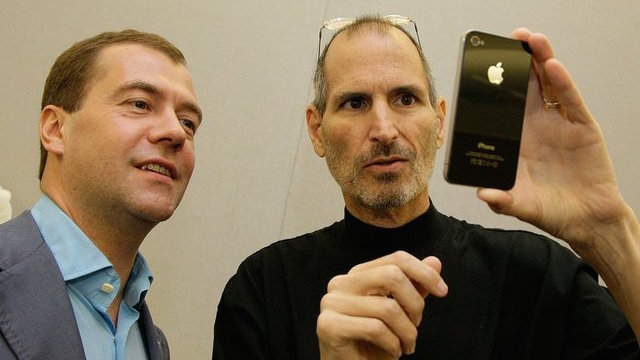3-question quiz predicts whether you believe in God

According to a Harris Poll conducted last year, about three-quarters of Americans—74 percent, to be precise—believe in God. That is a lot of people, but the figure is notably lower than it was in identical polls conducted over the past decade. In 2005, 2007 and 2009, 82 percent of Americans said they were believers. What can explain this nearly 10 percent decline in religious belief? I won’t try to speculate. Instead, I’ll explore one tentative explanation some psychologists have offered recently for understanding why some people believe in God while others don’t. People who are more disposed to analytical thinking, the hypothesis goes, are less inclined to believe in a deity.
In 2012, in the journal Science, social psychologists Will M. Gervais and Ara Norenzayan published the results of five studies suggesting this might be the case. I’ll discuss the findings in a moment. First, it’s time to test yourself.
The Questions
1. A bat and a ball cost $1.10 in total. The bat costs $1.00 more than the ball. How much does the ball cost? ____cents
2. If it takes 5 machines 5 minutes to make 5 widgets, how long would it take 100 machines to make 100 widgets? _____minutes
3. In a lake, there is a patch of lily pads. Every day, the patch doubles in size. If it takes 48 days for the patch to cover the entire lake, how long would it take for the patch to cover half of the lake? _____days
OK, done? Make a note of your answers. If Gervais and Norenzayan’s thesis holds, your responses to these brain teasers may just predict whether you are a religious believer.
This cognitive reflection test was first penned by Yale Professor and psychologist Shane Frederick in 2005. It was used as the basis of a study conducted with 179 Canadian college students. After completing the quiz task, the students were asked about their intrinsic religiosity, religious beliefs and beliefs in supernatural entities (including God, angels and the devil). The results followed expectations:
[A]s hypothesized, analytic thinking was significantly negatively associated with all three measures of religious belief, rReligiosity = –0.22, P = 0.003; rIntuitive = –0.15, P = 0.04; and rAgents = –0.18, P = 0.02. This result demonstrated that, at the level of individual differences, the tendency to analytically override intuitions in reasoning was associated with religious disbelief, supporting previous findings.
To translate: the more religious the undergrads were, the less likely they were to have demonstrated effective analytical reasoning on the three questions. And the better the students did on the questions, the less likely they were to have strong religious beliefs.
The Answers
At this point you are wondering how well you did on the questions. Did you get the right answer or the wrong answer? All three logic riddles are deceptively simple problems; that is, when encountering each question an obvious answer springs quickly to mind. Those answers are 10 cents, 100 minutes and 24 days. Any of those sound familiar? If those were your answers, which Gervais and Norenzayan characterize as the “intuitive” responses, chances are you are one of America’s 230 million people who believe in God.
If, however, you got a perfect score, your answers were what the authors label “analytical” (also known as “correct”), you are probably in the quarter of Americans who do not profess religious belief.
Question 1: Though the quick intuitive answer is 10 cents, a moment’s reflection leads to the realization that 10 cents is not a full dollar less than $1.00. (If you’re sleepy: 10 cents is 90 cents less than $1.00.) The correct answer can be reached through a little 8th grade algebra:
If the cost of the ball is x, the cost of the bat is x + 1.
x + (x+1) = 1.10
2x +1 = 1.10
2x = 0.10
x = 0.05, or 5 cents
Answer: the ball costs 5 cents and the bat costs $1.05, for a total of $1.10.
Question 2: Your brain screams at you that the answer must be 100, because your intuitive side sees the 5-5-5 pattern in the first example, and 100-100-100 just looks right. But if it takes 5 minutes for 5 machines to make 5 widgets, it doesn’t take 20 times as long for 20 times as many machines to make 20 times the widgets. It will take the same 5 minutes for 100 machines to make 100 widgets, and it will take 5 minutes for 1000 machines to make 1000 widgets, and so on, because each machine spits out one widget every five minutes. That is the rate of widget production for the machines, and it doesn’t change no matter how many machines you are running at once.
Answer: it would take 5 minutes for 100 machines to make 100 widgets.
Question 3: This trick here is that the lily pads grow at an exponential rate, not an arithmetic rate. On the day before the 48th day, the pond was only half-covered in lily pads; the day before that, one-quarter covered; the day before that, one-eighth covered; the day before that, one-sixteenth covered. Go back two weeks from the 48th day (day 34) and you will be hard-pressed to find any lily pads on the lake. It will be only 1/16,384 covered on that day. This means only .006% of the surface will be covered by a lily pad patch. Imagine how powerful a microscope you’d need to detect any lily paddage at all on day 1.
Answer: the pond will be half-covered in lily pads on the 47th day.
The Upshot
Are the authors implying that religious people are unintelligent, or that atheists have greater cognitive ability? No. Despite appearances, this is not the world’s shortest IQ test. The authors insist that they take no position on whether intuitive or analytical decision-making is the superior mode:
[W]e caution that the present studies are silent on long-standing debates about the intrinsic value or rationality of religious beliefs…or about the relative merits of analytic and intuitive thinking in promoting optimal decision making.
Instead, Gervais and Norenzayan draw on Nobel Prize winner Daniel Kahneman’s viewhat human cognition can best be conveyed as the interaction of two “systems.” System 1 is the fast, almost instinctive process that makes instant, gut-response, unreflective judgments, while System 2 is the slow, effortful process that draws on our powers of analytical reasoning. Of the two processes,
one (System 1) relies upon frugal heuristics yielding intuitive responses, while the other (System 2) relies upon deliberative analytic processing. Although both systems can at times run in parallel, System 2 often overrides the input of system 1 when analytic tendencies are activated and cognitive resources are available…
Available evidence and theory suggest that a converging suite of intuitive cognitive processes facilitate and support belief in supernatural agents, which is a central aspect of religious beliefs worldwide…Religious belief therefore bears many hallmarks of System 1 processing.
The authors reason that since “religious belief emerges through a converging set of intuitive processes, and analytic processing can inhibit or override intuitive processing…analytic thinking may undermine intuitive support for religious belief.” Seeing people through the Kahnemanian lens thus “predicts that analytic thinking may be one source of religious disbelief.”
There are many other reasons people might decide not to believe in God, of course, and it would be a mistake to construe religious believers as unreflective, shallow-thinking fools. (That would itself be a snap, narrow-minded, System-1-style judgment.) But the research from Gervais and Norenzayan turns a useful lens on a puzzling aspect of human psychology.
—
Image credit: Timothy R. Nichols / Shutterstock.com





